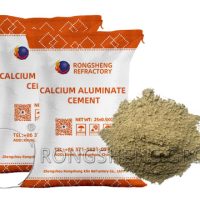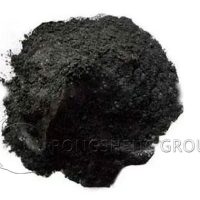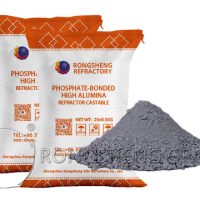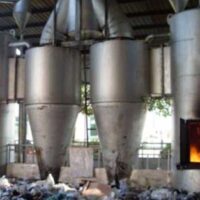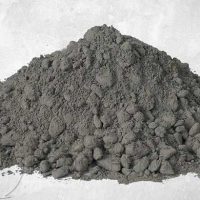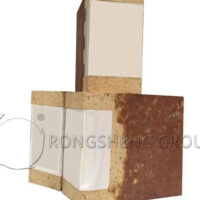Aluminate cement, also known as high-alumina cement, is a hydraulic cementitious material made of bauxite and limestone, which is made by melting or sintering to form a clinker with monocalcium aluminate and dicalcium aluminate as the main components, and then ground. Its code name is CA. Aluminate cement is known for its excellent properties such as fast hardening and early strength, corrosion resistance to acidic salt media, ability to harden at low temperatures and high temperature resistance.
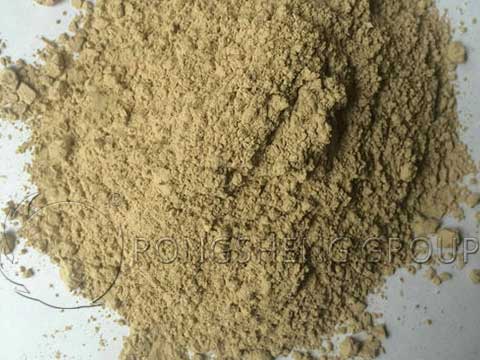
Performance Indicators of Aluminate Cement
① Fineness. The specific surface area is not less than 300m2/kg or the residue on the sieve is not more than 20% after passing a 0.045mm sieve. In the event of a dispute without agreement, the specific surface area shall prevail.
② Setting time. CA-50, CA-70 and CA-80 shall not be earlier than 30min, and CA-60 shall not be earlier than 60min. The final setting time of CA-50, CA-70 and CA-80 shall not be later than 6h, and CA-60 shall not be later than 18h.
③ Strength. The strength at each age shall not be lower than the value in the Following Table.
| Cement Type | Compressive Strength MPa | Flexural Strength MPa | ||||||
| 6h | 1d | 3d | 28d | 6h | 1d | 3d | 28d | |
| CA-50 | 20 | 40 | 50 | – | 3.0 | 5.5 | 6.5 | – |
| CA-60 | – | 20 | 45 | 85 | – | 2.5 | 5.0 | 10.0 |
| CA-70 | – | 30 | 40 | – | – | 5.0 | 6.0 | – |
| CA-80 | – | 25 | 30 | – | – | 4.0 | 5.0 | – |
How to Use “High-Aluminum Materials” to Produce High-Aluminum Cement?
-
Raw material requirements
Generally, the Al2O3 content is required to be 40% or above, and common sources include bauxite, high-aluminum tailings, etc. In addition, it is also necessary to match an appropriate amount of limestone (providing CaO) and a small amount of gypsum (adjusting properties such as setting time) as auxiliary raw materials. But what we are going to introduce today is a more cost-effective raw material-high-aluminum material (aluminum ash harmless product), whose Al2O3 content is ≥60%, which meets the requirements for preparing high-aluminum cement. At the same time, it contains a certain amount of CaO, which can appropriately reduce the addition of auxiliary raw materials. The price of this raw material is suitable, which can reduce costs and improve economic benefits for companies producing high-aluminum cement!
-
Production process steps
Raw material crushing and grinding: Because the high-aluminum material itself has a finer particle size, it does not need to be crushed, and it needs to be slightly ground to adjust the particle size. Only some auxiliary raw materials need to be crushed and then ground. Compared with the use of raw materials such as bauxite and high-aluminum tailings, the use of high-aluminum materials can greatly reduce production energy consumption and reduce costs. To ensure better chemical reactions between subsequent raw materials and improve reaction efficiency.
Batching and calcination: According to the target chemical composition and performance requirements of high-aluminum cement, the proportions of high-aluminum materials, limestone, gypsum and other raw materials are accurately calculated and adjusted to ensure that the two can generate suitable calcium aluminate phases during the subsequent calcination process. After the prepared raw materials are evenly mixed, they are sent to calcination equipment such as rotary kilns for high-temperature calcination, and various parameters are strictly controlled. During calcination, the various components undergo complex chemical reactions, mainly generating calcium aluminate minerals, which are the key mineral components of high-aluminum cement with early strength and high strength.
Cooling and grinding: The calcined clinker needs to be cooled quickly, and the commonly used cooling methods are air cooling and water cooling. Avoid adverse phase changes during the slow cooling process to ensure the stability of the performance of high-alumina cement. The cooled clinker is sent to the grinding equipment again together with an appropriate amount of gypsum to grind the clinker to a specified fineness. Generally, the specific surface area is required to reach a certain value, such as about 300~500m2/kg, so that the finished cement has good performance.
-
Product Features and Applications
① It has a fast setting and hardening speed and can reach a high strength in a short time. This makes it have obvious advantages in projects that need to be constructed quickly and put into use as soon as possible. For example, it can be used in emergency repair projects to ensure the timeliness and practicality of the project.
② It has good heat resistance and can be formulated into amorphous refractory materials such as refractory castables and refractory mud. It is used in occasions with high temperature environment requirements. Such as the lining of high-temperature kilns and the foundation of thermal equipment.
③ It has strong corrosion resistance and has good resistance to corrosive media such as sulfates. For example, it can be used for the ground of chemical workshops and the structure of sewage treatment facilities to improve the durability of buildings.
④ Large hydration heat: In low temperature environments, its large hydration heat can accelerate the hydration reaction of cement and improve the early strength of concrete. It is suitable for concrete projects constructed in winter, which can reduce the risk of concrete freezing and ensure the quality of the project.
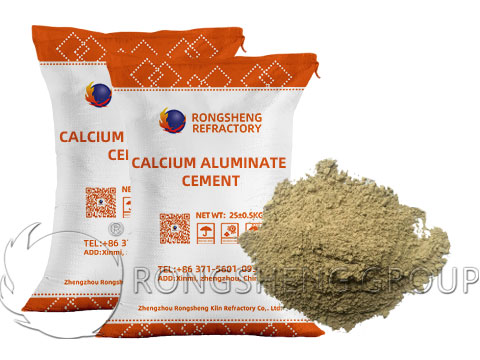
Aluminate Cement Strength Shrinkage Problem and Solution
The fast-hardening and early-strengthening properties of aluminate cement were first used in many national defense projects and rapid repair projects, and later gradually expanded to industrial and civil buildings. However, due to the crystal transformation of the hydration products of aluminate cement, the void ratio of the hardened cement stone increases, and the problem of later strength shrinkage occurs, which makes people take a very cautious attitude when using aluminate cement in structural engineering. Later, as many researchers conducted in-depth and systematic research on its hydration mechanism and long-term durability, it is believed that some technical measures can well solve the strength shrinkage problem and can be used with confidence in structural engineering. At present, the main measures to control strength shrinkage are as follows.
① Control the water-cement ratio and cement dosage of concrete
When used to prepare concrete, the water-cement ratio is less than 0.4, and the cement dosage is greater than 400kg/m3. In this system with a smaller water-cement ratio and a larger cement dosage, some unhydrated cement can be retained. They react with the free water released during the crystal transformation of the hydration product to form microcrystals to fill the pores in the concrete, reducing the strength loss. Thus, it can play a compensatory role in later strength.
② Compound with other materials
Add some calcium and silicon fillers to cement, or use aluminate and silicate composite. In this way, the formation of metastable hydration products CAH10 and C2AH8 can be minimized or avoided, thereby solving the problem of strength shrinkage.
③ Pay attention to the use environment
At room temperature (20℃), the rate of conversion of CAH10 and C2AH8 to C3AH6 is very slow, but it is faster under hydrothermal conditions of 30~50℃. Therefore, if the simultaneous existence of high temperature and humidity can be avoided during use, the problem of strength shrinkage can also be well controlled.

